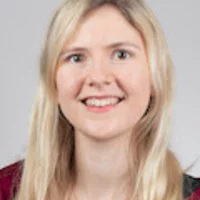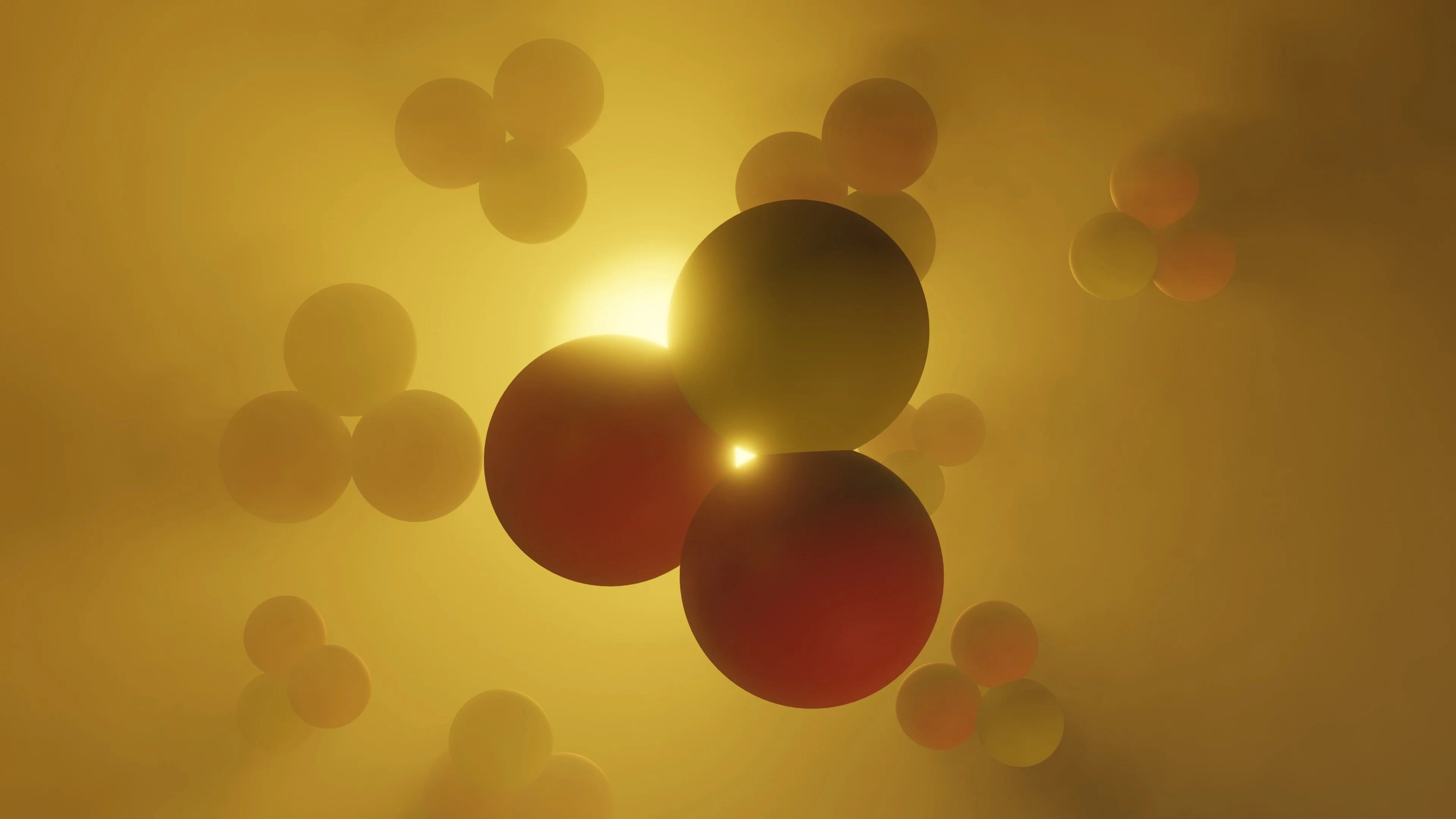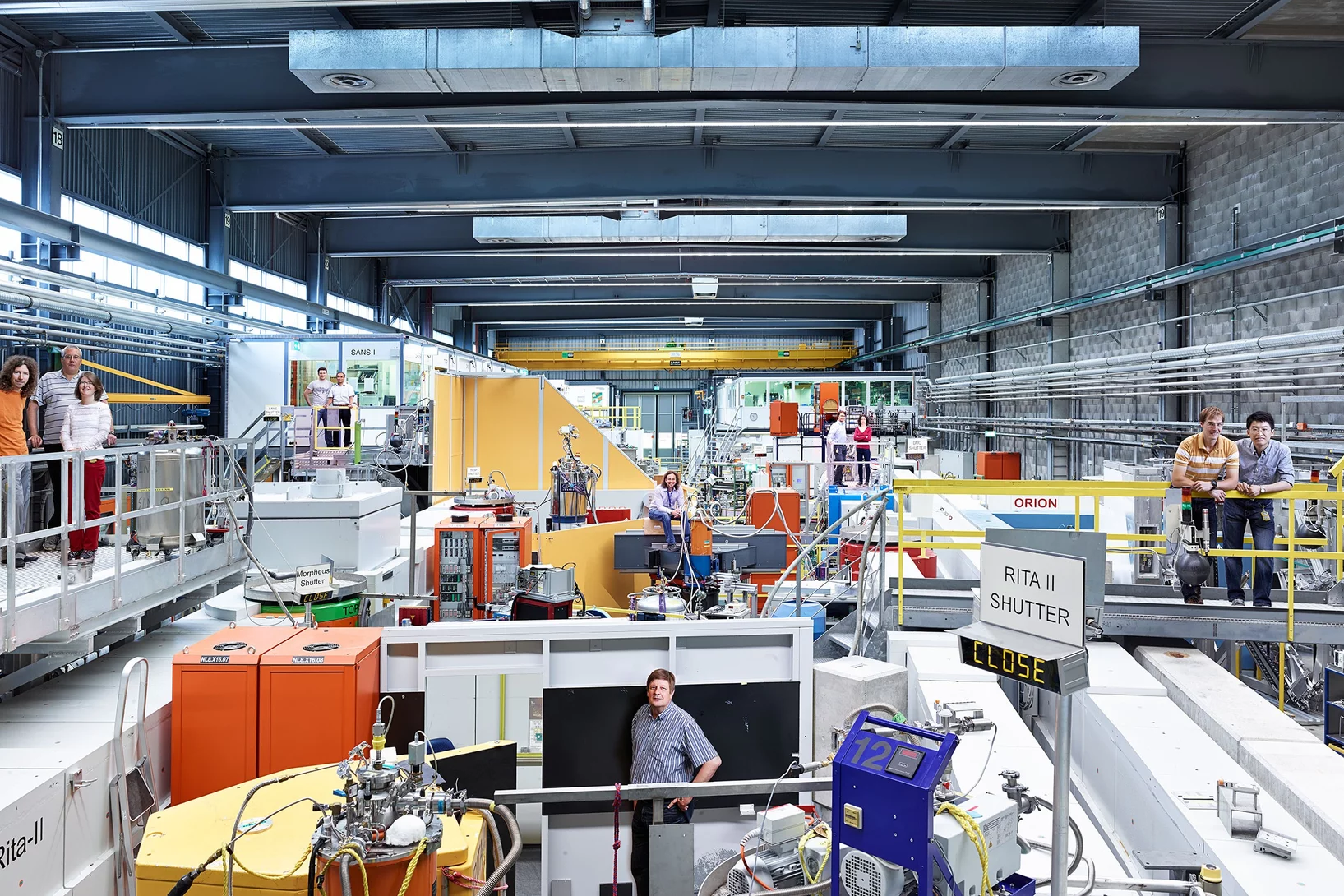The PSI Center for Neutron and Muon Sciences uses neutrons and muons to explore and understand matter and materials.
Recent News & Scientific Highlights
ERC Consolidator Grant for Neutron Lifetime Experiment at PSI’s source for ultracold neutrons
Our collaborator Prof. Dr. Martin Fertl from the Johannes Gutenberg University Mainz (JGU) and the PRISMA+ Cluster of Excellence has been awarded an ERC Consolidator Grant, one of the EU's most highly endowed grants, to support the development of the next-generation neutron lifetime experiment.
Anisotropic Band-Split Magnetism in Magnetostrictive CoFe2O4
Single crystal spinel CoFe₂O₄ exhibits the largest room-temperature saturation magnetostriction among non-rare-earth compounds and a high Curie temperature (T₍c₎ ∼ 780 K), properties that are critical to a wide range of industrial and medical applications. Neutron spectroscopy ...
SμS call for proposals I-26 is closed now
The call for SμS proposals I-26 (deadline 01 December 2025) is closed now.
SINQ call for proposals is open
The SINQ call I-26 is open now.
Dectris Prize: Congratulations to Andrej Maraffio
Congratulations to Andrej Maraffio for winning the Dectris Prize 2025!
Operando neutron imaging of an alkaline electrolysis cell for mapping gas distributions
Optimizing hydrogen and oxygen transport within porous electrodes is essential for improving the efficiency of industrial alkaline electrolyzers. In this study, we utilize operando dynamic neutron radiographic measurements to investigate ...
Our Facilities
Latest CNM publications
-
Pietosa J, Puzniak R, Paliwoda D, Katrusiak A, Gawryluk DJ, Wisniewski A
Superconducting state properties of Cu-substituted Fe0.99Te0.66Se0.34 exhibiting superconductivity recovered under hydrostatic pressure
Scientific Reports. 2025; 15(1): 40940 (15 pp.). https://doi.org/10.1038/s41598-025-24806-x
DORA PSI -
Lane H, Kaur G, Kawamata M, Nambu Y, Keller L, Ewings RA, et al.
Anisotropic band-split magnetism in magnetostrictive CoFe2O4
Advanced Functional Materials. 2025: e16830 (18 pp.). https://doi.org/10.1002/adfm.202516830
DORA PSI -
Hayrapetyan A, Tumasyan A, Adam W, Andrejkovic JW, Bergauer T, Chatterjee S, et al.
Bottom quark energy loss and hadronization with B+ and Bs0 nuclear modification factors using pp and PbPb collisions at ⎷sNN = 5.02 TeV
Journal of High Energy Physics. 2025; 2025(2): 195 (40 pp.). https://doi.org/10.1007/JHEP02(2025)195
DORA PSI -
Chekhovsky V, Hayrapetyan A, Makarenko V, Tumasyan A, Adam W, Andrejkovic JW, et al.
Search for top squarks in final states with many light-flavor jets and 0, 1, or 2 charged leptons in proton-proton collisions at √s = 13 TeV
Journal of High Energy Physics. 2025; 2025(10): 236 (51 pp.). https://doi.org/10.1007/JHEP10(2025)236
DORA PSI













